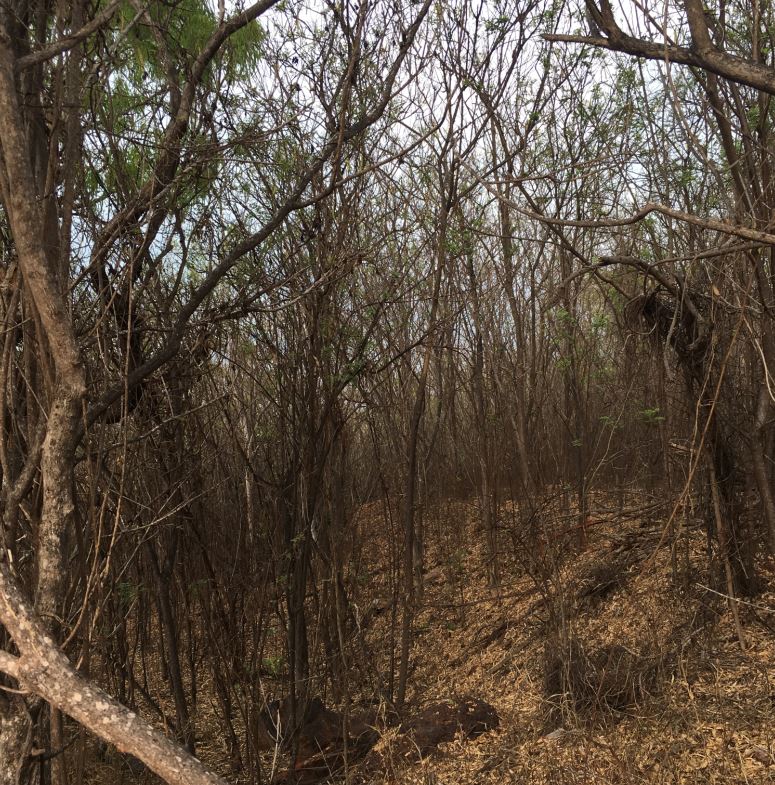
Jedi live in the here and now, and don’t have stress about the future or the past. This isn’t as easy as it might seem because the mind always rushes to the future or past. Contact with the Living Force always occurs in the present moment. The mind is our tool, and we need to stop the incessant thinking and mental chatter that comes from the mind in order to be conscious of the present moment, and to live in the present moment. We need to control the mind, and not let the mind control us.
(The 33 Jedi Traits)
Like Air
Mindfulness is defined by the Webster dictionary as “The practice of maintaining a nonjudgmental state of heightened or complete awareness of one’s thoughts, emotions, or experiences on a moment-to-moment basis.” Other sources define mindfulness as pretty much the same thing, the practice of being present in the here and now. In other words being mentally right here in this present moment as you read these words. Mindfulness is nothing more than that. If we still our mind for a minute and sense every quiver, every sensation in our body without judgement. If we allow thoughts to pass like clouds without engaging them. We are completely aware of what is happening inside and outside of ourselves with each passing breath, that is mindfulness.
“Mindfulness is about being fully awake in our lives.
It is about perceiving the exquisite vividness of each moment.
We also gain immediate access to our own powerful inner resources
for insight, transformation, and healing”.
Jon Kabat-Zinn
Mindfulness is a word that has a lot of connotations and brings up a lot of imagery like meditating monks, yoga on the beach or a child humming while drawing shapes. All of these things are mindfulness in action. The word is also a cliché.
In recent years the term has become a buzz word in marketing, entrepreneurship, leadership and the health industry. Thousands of books and magazine articles have been written on the health benefits of Mindfulness and hundreds more on how to be mindful. Entire shelves and racks in book shops and magazine stores are full of coloring books that promote mindful practices by sitting for a few minutes a day shading in shapes with colored pencils.
Psychologists refer their clients to courses and apps that teach and guide them through mindfulness techniques. There is mindfulness techniques offered for all activities, cooking, cleaning, running, walking, child raising, working and breathing. The sheer genius of business to make a multi-billion industry out of Mindfulness astounds me. Since Eckhart Tolle penned the “Power of Now” the mindfulness craze has touched just about everyone in the west.
I have friends who are lifelong Buddhists. They watch the current phenomena with despair and bemoan the rampant commercialization of Mindfulness. They feel that a noble practice has been hijacked for profit. The idea that someone could do something as audacious as sell mindfulness for vast profits seems insane. It is like selling air.
The Past
What many people don’t realize is that mindfulness has been around for a very long time. In fact it is part of our makeup. The Eastern and Western philosophies and spiritual traditions have advocated mindfulness and the power of living in the Now for millennia. Mindfulness is no mystery, people just don’t live in the present. Our minds are perched in the past as we ruminate on events or regrets.
We ask ourselves “why” and berate ourselves for mistakes as if we could turn the clock back and make things right. Of course we can’t and to think this way is a form of insanity. The best we can do is learn from the past and resolve not to make the same mistakes again. We can and should make amends for past mistakes if we can. If we can’t we should learn to forgive ourselves and others and move on with our life
Listing the wrongs I had to done to people in my past and seeking to make amends was a Step I took in my first year of recovery. It was one of the hardest but also the most rewarding experiences of my life. I was compelled to face my role in past grievances and let the blame on others go. Grievances, blame and grudges against people and organizations were forgotten. I started to realize where I had made mistakes and burned bridges. Resentment seemed like such a foolish notion and I was able to forgive and let go. Those I approached and confessed my wrongs were open armed and understanding.
I began to realize the value of sincerity and honesty. Humility without self depreciation and mutual respect for others became virtues more valuable than gold. I realized my resentments and belligerency and refusal to forgive and forget had cost me many opportunities. Determined to place it all behind me I moved on with my life. The past is there as a resource. The best lessons in life are learned from the worst mistakes. I don’t reside in the past now but I won’t forget it either.
The Future
We also tend to compromise the present by projecting our minds in to the Future. We are always heading somewhere. Goals and targets are set. Preconceived conditions are made that determine what our imagined state of happiness or fulfillment is. We set conditions like; “Once I get that promotion things will be perfect” and “I’ll finish my degree and life will be great” or “Once I make a couple of million I’ll retire and be happy”. These statements make two assumptions about the future which are largely out of our control; that these events will occur as planned and that we’ll derive a perpetual state of fulfillment, happiness or contentment on reaching that goal.
Obviously life does not always play along with our plans and when they do we find ourselves no better off than when we started. The Promotion provides more money and perks but has more responsibility and stress. The degree allows us to do other things but life is anything but “great” because we can’t start the career the course promised or we get jaded as reality bites. We eventually make enough money to retire and find ourselves too old to “really live” or we retire early and find that life is not so green on the other side of the day to day grind.
The Lure of Tomorrow
When I was in the Army I volunteered for a posting to a country in Africa. I decided that the posting would provide invaluable experience and would be worth two years of my life. Within a few months I was counting the days and months down to the end of my rotation. I dreamed of what it would be like when I got back home and imagined wonderful things. Depression set in as the months dragged on and the tempo ranged from full alert on long range patrols to days of mind numbing barrack duties.
Eventually the day arrived when I got on a plane and flew out. The elation was short lived. Months later I was wishing I was back. I hear veterans from Afghanistan and Iraq say the same thing, wanted to be home and then wanted to be back. For two years I lived with my head in some place other than the here and now.
I can still remember laying in the desert under a sky filled with stars and hearing jackals yelping in the distance. The burning sunsets over a parched land in all its splendor. The call of wild birds in the mountain forests and the cries of Baboons. Mountains that rose above the desert capped with clouds and covered in ancient forests. A train of camels being led by men wearing skirts gilded with large belts bearing long curved swords. Images that haunt me to this day and yet at the time I was utterly miserable and longed for a better tomorrow.
One of the reasons alcoholism is so spiritually debilitating is because it keeps us anywhere but in the Now. We don’t want to face the reality of the present moment. So we drink to escape to an imagined past or a better future.
Living in the Now
What is a modern day cliché has actually been known for thousands of years. Life happens in the here and now. Not in the past and not in some time in the future. The past is gone beyond recall and the future is uncertain. Every moment we find ourselves in is the Now. There is no time other than the Now which really matters. We plan for the future in the Now, we regret or remember the past in the Now. Our mind may be trying to drag us to the future, our Ego may be ruminating on the past but all of this is happening in the present moment. Every moment that we are absent is a moment lost.
The benefits of living in the Now are well documented. Everyone knows that stress is a killer. Research has shown that mindfulness practice leads to lower stress and anxiety levels. Lower stress in turn has a benefit to cardiovascular health, sleep and immunity. We become more in tune with our emotions and learn to deal with them objectively and constructively. Our senses become more refined, we begin to notice the world around us more.
Listening to others becomes easier. We are able to stop and appreciate the sights and sounds of life. Food is tasted rather than being hurriedly shoved in to our mouths. We become more conscious of our body in a healthy way and start to care for it more.
The things that upset us or caused us anxiety and depression in the past no longer have that effect. We are more resilient and accepting of life’s vicissitudes. Relationships with other people improve and as we become more self accepting we start to appreciate others more and are more empathetic. We find ourselves calm in the midst of a raging storm. Who would not want that?
You should sit in meditation for twenty minutes every day
– unless you’re too busy –
then you should sit for an hour.
– Old Zen adage –
Practice
Meditation is a mindfulness exercise however one can practice mindfulness anywhere, anytime. While driving a car, brushing the dog, washing the dishes, listening to music, playing with the kids and in fact doing just about any activity. It is simply paying attention to what you are doing. Commit your mind to the task with intent. If you are washing the dishes you are only washing the dishes and nothing else. Feel the water on your hands, the hardness of the porcelain and cutlery. Hear the sounds it makes. Use all of your senses.
Allow mental intrusions to pass without engaging them. You can focus on the breath, the rise and fall of your chest or abdomen. If thoughts distract you simply return to the breath. There is a saying that when an old man sits, he only sits, there is nothing else going on; this is the essence of mindfulness.
Look to this day:
For it is life, the very life of life.
In its brief course
Lie all the verities and realities of your existence.
The bliss of growth,
The glory of action,
The splendour of achievement
Are but experiences of time.
For yesterday is but a dream
And tomorrow is only a vision;
And today well-lived, makes
Yesterday a dream of happiness
And every tomorrow a vision of hope.
Look well therefore to this day;
Such is the salutation to the ever-new dawn!
Sanskrit proverb










